What Is the Evaluation Planning Technique?
Evaluation poker is a technique that a product team can use to collaboratively evaluate issues in their backlog for prioritization.
What Does It Help Achieve?
This technique helps a team to reach a consensus on what they should work on next and a clear pathway on where they are headed as a team.
Everyone in the team gets a chance to give their opinion. The decision of what the team should work on next is not made by one individual – the HIPPO effect.
How Does It Work?
Initially members in a board secretly evaluate the issues using the prioritization criteria created by a board admin.

The criteria are a principle by which the team evaluates the issues for prioritization. Examples of criteria include story points, revenue and more.
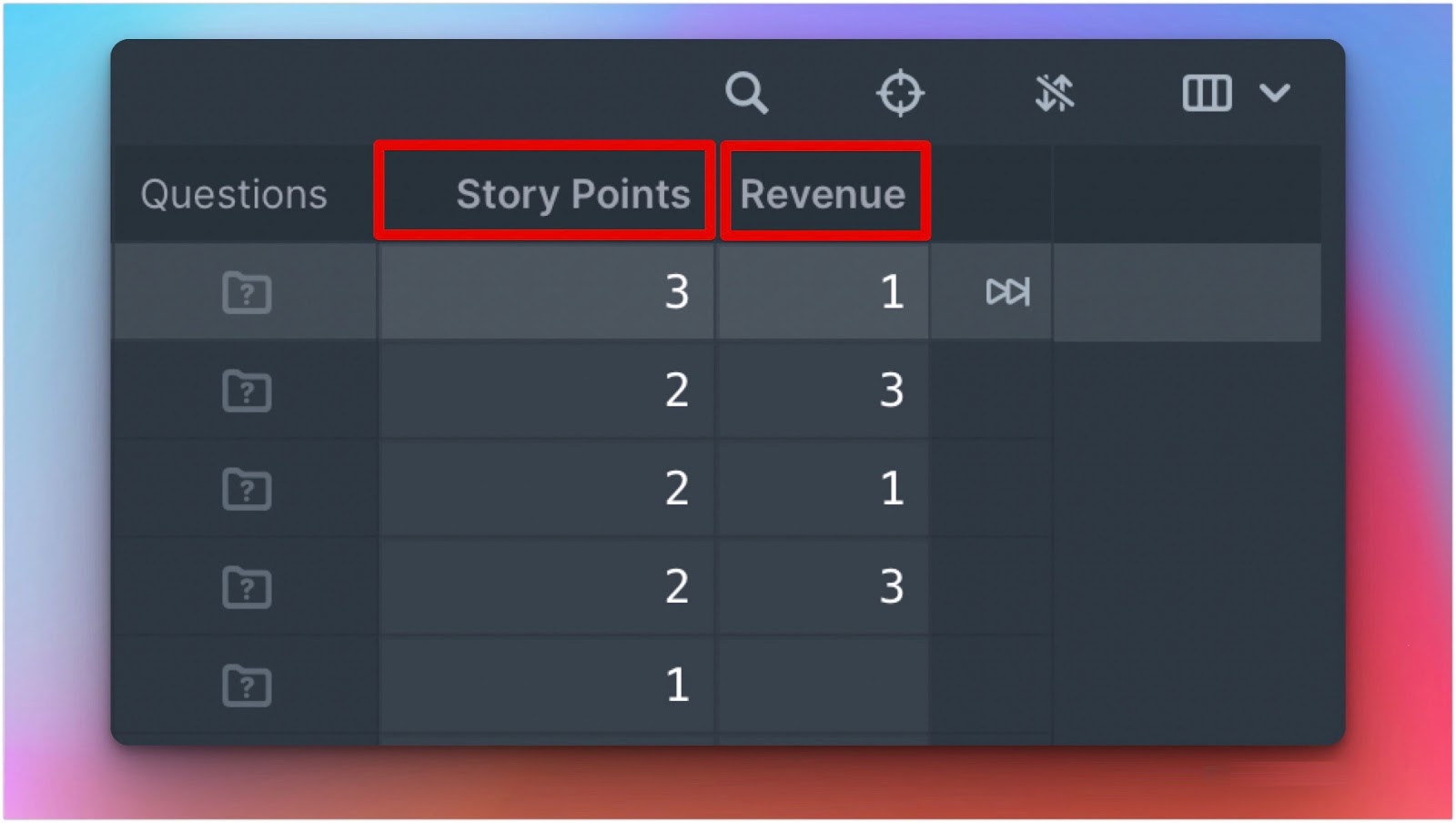
There are few types of scoring methods in Ducalis that you can use when evaluating the issues, for example, the Fibonacci sequence. We mostly recommend that teams use the Fibonacci sequence as their scoring method because it helps spread out the scores.

When the team is done evaluating, the scores are revealed on a date set by the board owner or admins to check team alignment.
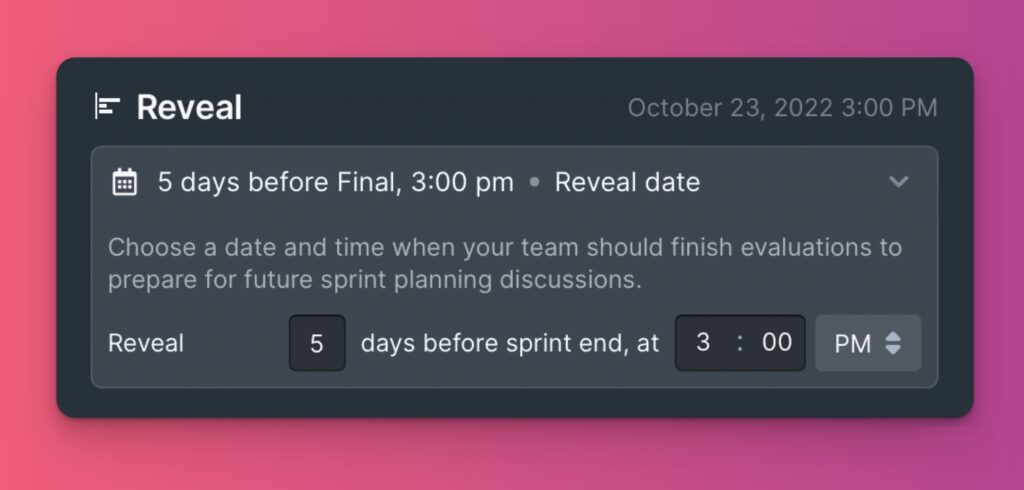

After scores are revealed for the team to discuss, the owner or admins can block users from being able to edit their scores.
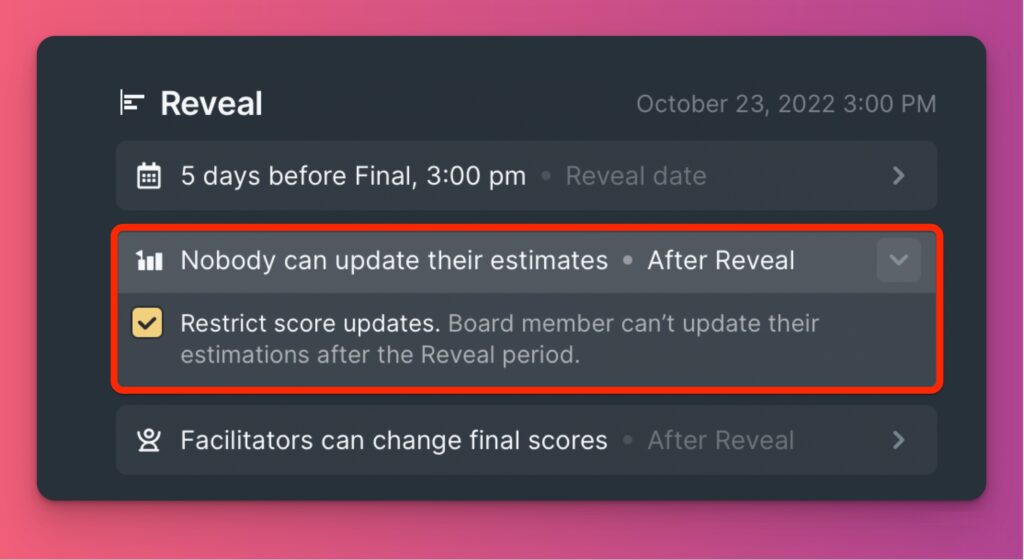
There are three levels of alignment: low, medium, and high.
Read more on how alignment works in this article. 
Issues with high alignment do not need to be discussed because the team agrees on where they should be on the priority list.
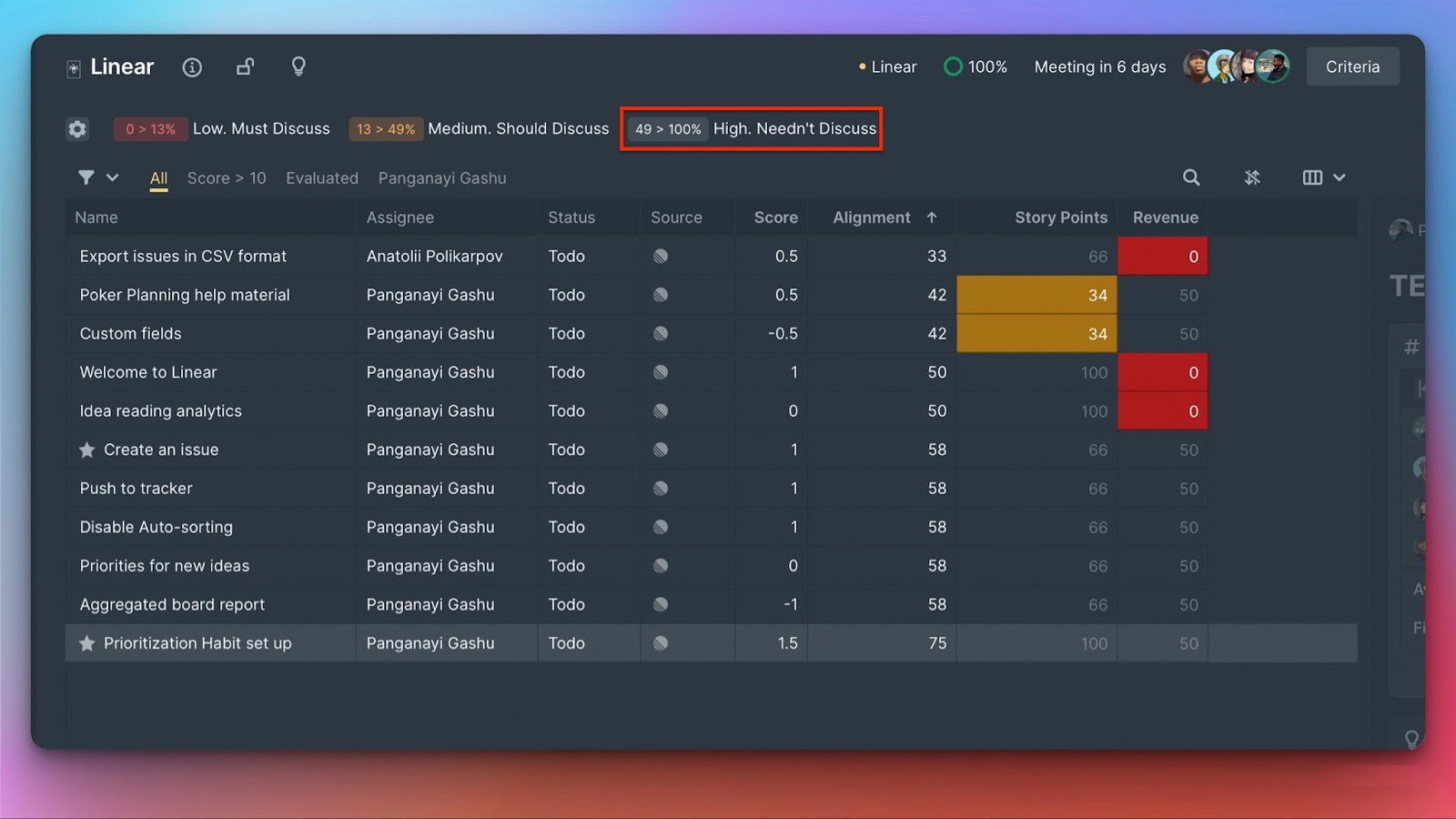
The team looks for issues with low and medium alignment and discusses those issues so that they can re-evaluate them.
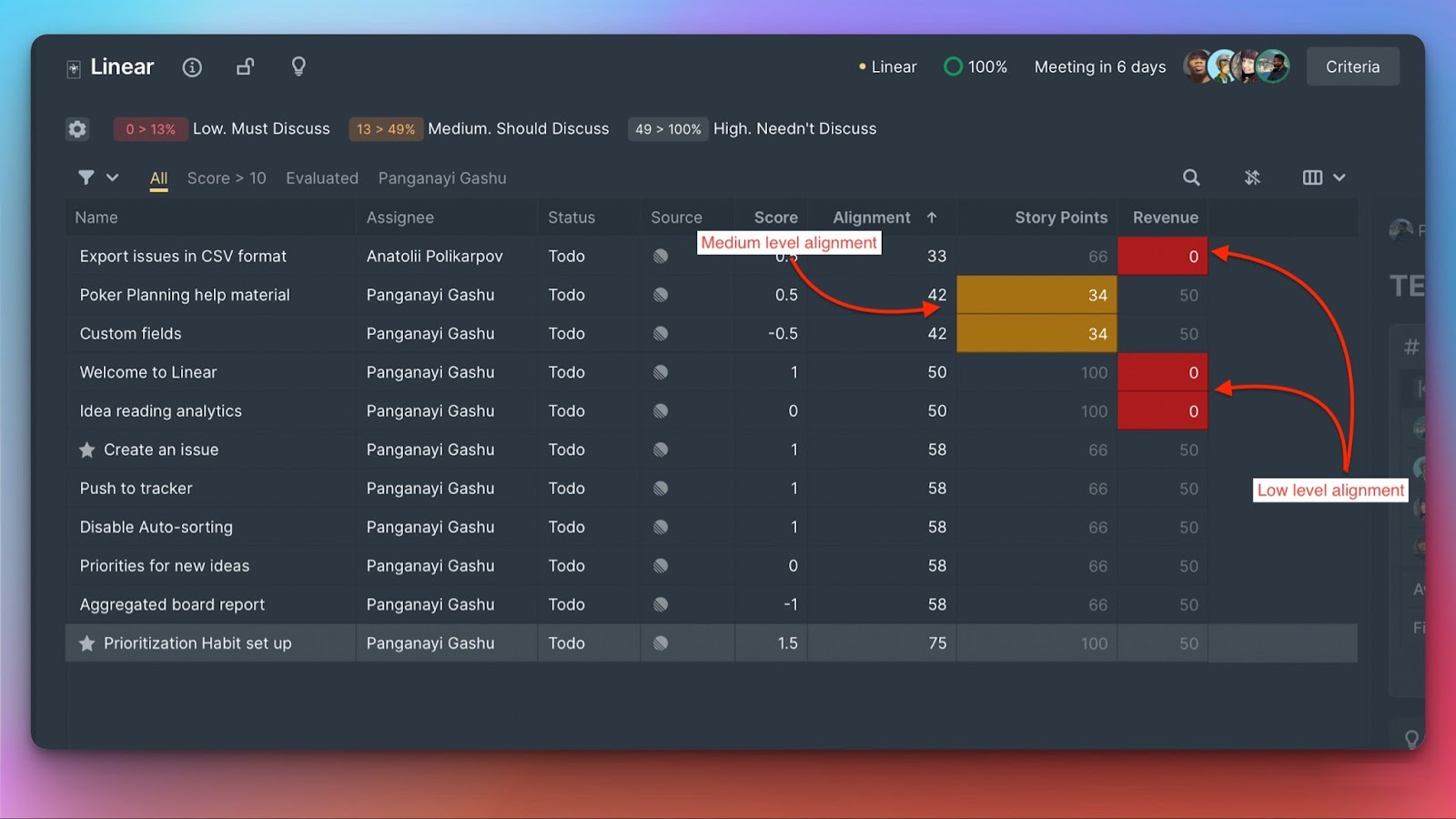
Attention should be paid to team members with the lowest and highest scores on an issue– Outliers. They should justify their scores, help other team members understand their decisions.
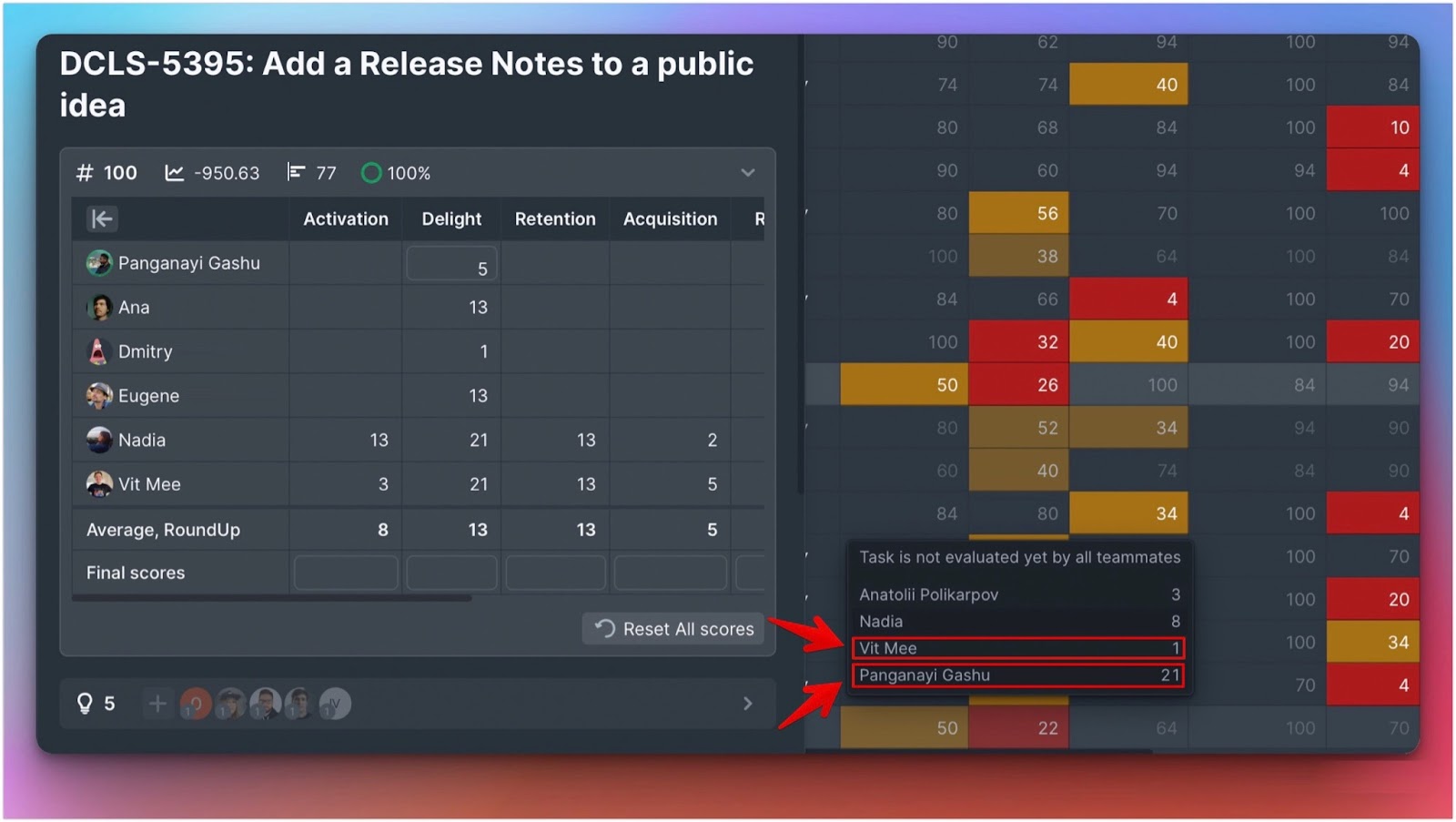
When the discussion is done, the team members go back and re-evaluate the issues. Just open the issue card and find the re-evaluation section. After re-evaluation and alignment checked one more time.
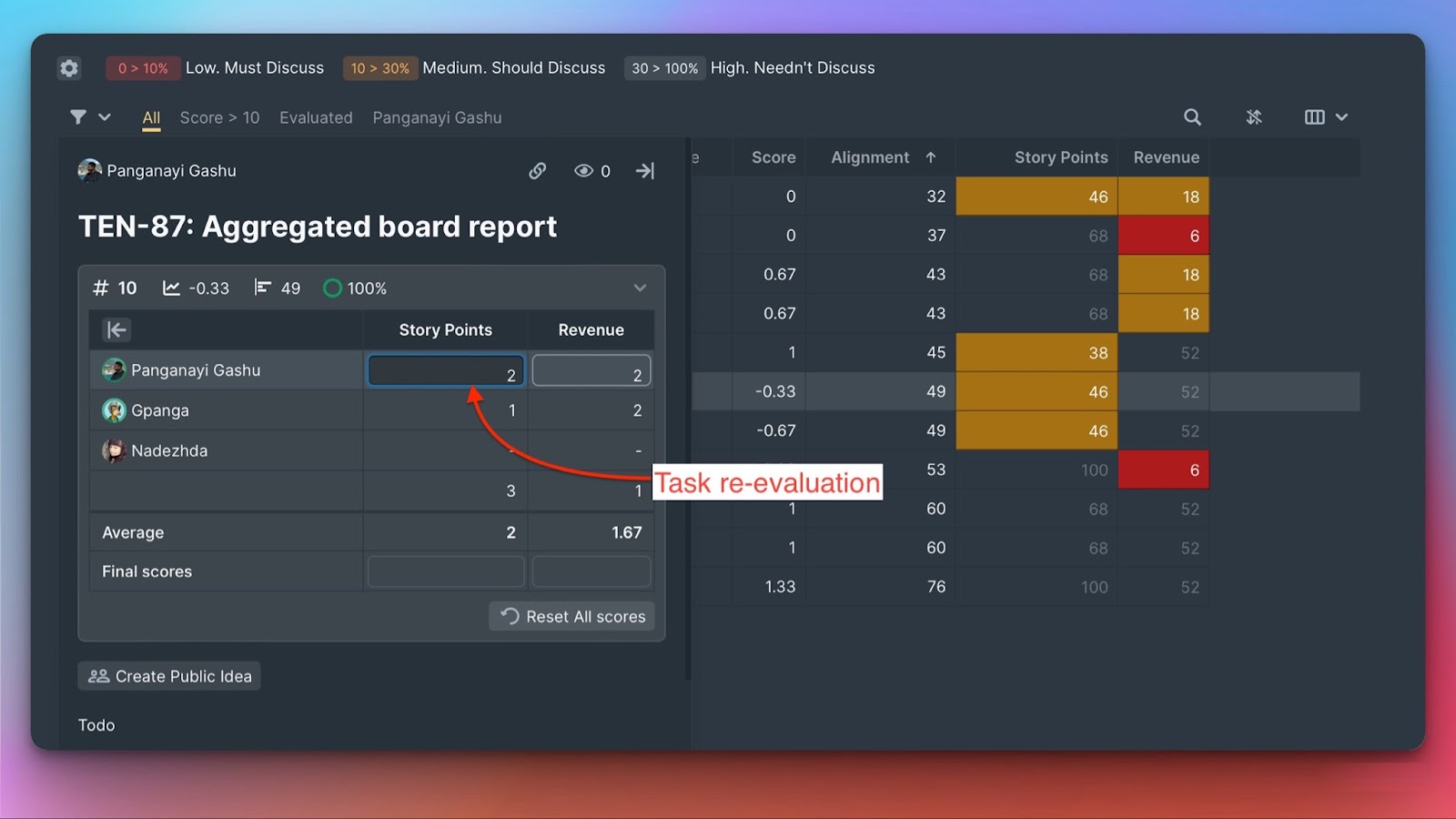
Tip! For easier re-evaluation process you can turn off table auto sorting
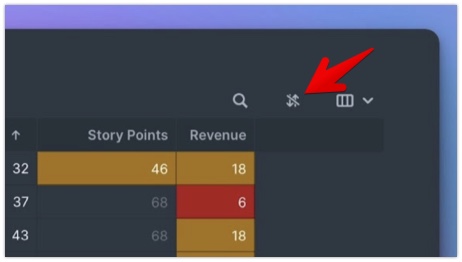
Instead of every team member having to re-evaluating, the team leader can appoint facilitators who will be responsible for changing the Final scores after the team finishes discussing the misalignment. This will make issues re-evaluation faster, and also will add some order in large teams.
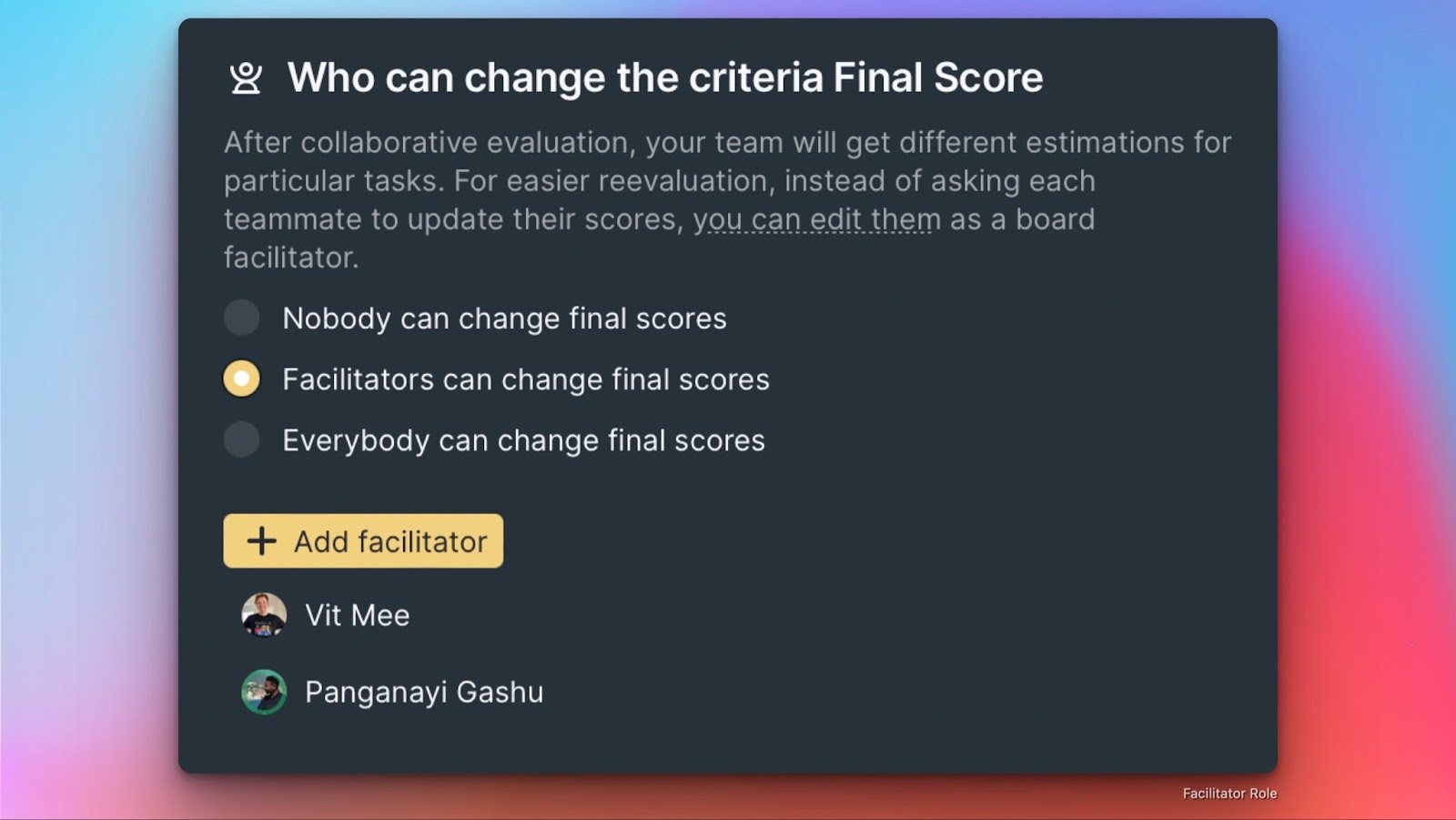

If every team member re-evaluates issues for themselves, then the team has to repeat the process of revealing the scores, discussing issues with misalignment and re-evaluating again until an agreement is reached.
For issues with huge teammates’ scores differences, you might consider two likely problems:
- Product uncertainty
- Technical uncertainty
And with such issues you might want to either put them aside until the uncertainty is resolved, or use a range as the estimate (if you were not using it already).
Next Step
You can check out how to re-evaluate issues with your teammates to reach an agreement on what prioritize from your backlog as a part of the Evaluation poker technique.

